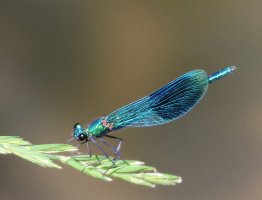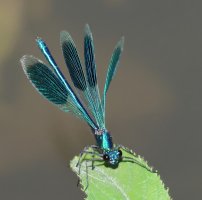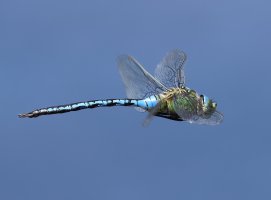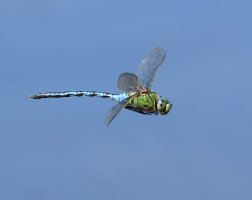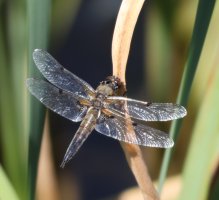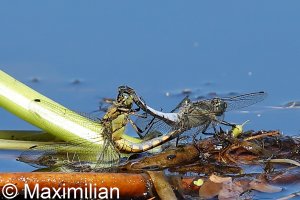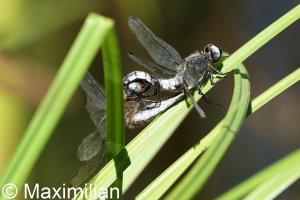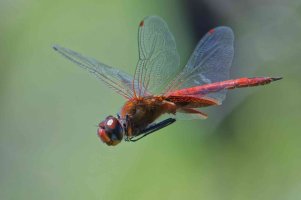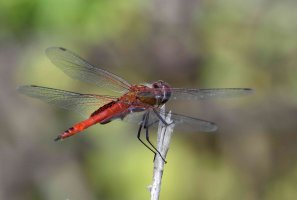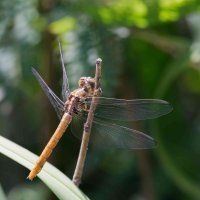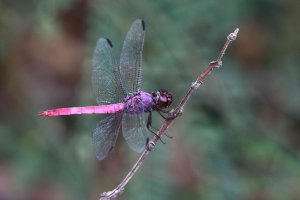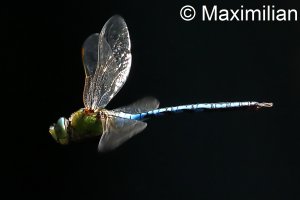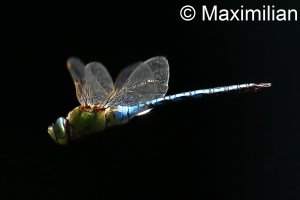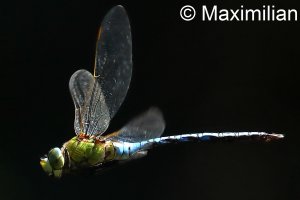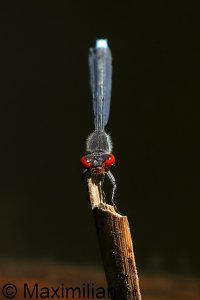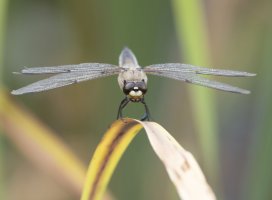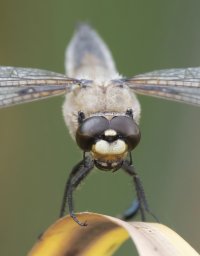You are using an out of date browser. It may not display this or other websites correctly.
You should upgrade or use an alternative browser.
You should upgrade or use an alternative browser.
Dragonflies and Damselflies
- Thread starter AlanF
- Start date
Two from today: the first one is Tramea lacerata - Black Saddlebags Skimmer, I don't think I ever posted one in fly. Very scarce here, hard to get a really good opportunity for decent shot. And actually this was my goal today.
The second one is much more frequent... The problem is that I always miss-ID it for all these years! (and I still don't know what is it...).

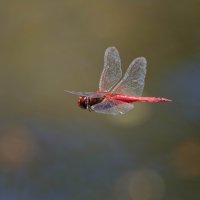
The second one is much more frequent... The problem is that I always miss-ID it for all these years! (and I still don't know what is it...).


Upvote
0
Hi ISv!... The second one is much more frequent... The problem is that I always miss-ID it for all these years! (and I still don't know what is it...).
You and I know that I am no odonatologist
(sometimes I wish I had turned that way. But as an engineer, I can make more money for good photo gear
And as you pointed out, sometimes it needs an individual in hand (which I don't like to do) and to observe e.g. the shape of cerci, etc.
But I think I found several sources and ways to get through the ID of odonata.
My personal guess here is that this could be a scarlet skimmer, (aka. ruddy marsh skimmer, crocothemis servilia).
If you have already proven that wrong, then I am sorry to "think" I am more clever than you, which I definitely think I am not.
My reasons that point towards a scarlet skimmer are the general shape and colour, the black band at the abdomen, the red cerci, and the red wing veins, that look like slight red basal wing spots. Sites on the web tell that they are from Asia, but also common in Hawaii and Florida.
I also found similar looking dragonflies at treknature.com and Hawaii Nature Journal that were IDed there as scarlet skimmer.
I hope, you can confirm or discard my ID with this information.
Yours,
Maximilian
Last edited:
Upvote
0
First ruddy darters (sympetrum sanguineum) of the season.
The second pic shows a behaviour pointing the abdomen towards the sun, which I never recognized before in Germany.
This obelisk posture seems to be common for several dragonflies to prevent overheating on sunny days.
I saw it first in Rhodes and I read about it when I tried to ID the black pennant, and I falsely thought those to be from the genus trithemis.
The trithemis are called in German "Sonnenzeiger" meaning "sun pointer".
Now I also see this behaviour here at home.

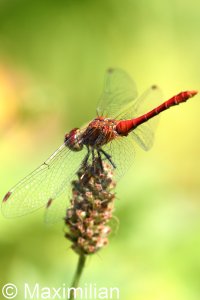
The second pic shows a behaviour pointing the abdomen towards the sun, which I never recognized before in Germany.
This obelisk posture seems to be common for several dragonflies to prevent overheating on sunny days.
I saw it first in Rhodes and I read about it when I tried to ID the black pennant, and I falsely thought those to be from the genus trithemis.
The trithemis are called in German "Sonnenzeiger" meaning "sun pointer".
Now I also see this behaviour here at home.


Upvote
0
Hi ISv!
You and I know that I am no odonatologist
(sometimes I wish I had turned that way. But as an engineer, I can make more money for good photo gear)
And as you pointed out, sometimes it needs an individual in hand (which I don't like to do) and to observe e.g. the shape of cerci, etc.
But I think I found several sources and ways to get through the ID of odonata.
My personal guess here is that this could be a scarlet skimmer, (aka. ruddy marsh skimmer, crocothemis servilia).
If you have already proven that wrong, then I am sorry to "think" I am more clever than you, which I definitely think I am not.
My reasons that point towards a scarlet skimmer are the general shape and colour, the black band at the abdomen, the red cerci, and the red wing veins, that look like slight red basal wing spots. Sites on the web tell that they are from Asia, but also common in Hawaii and Florida.
I also found similar looking dragonflies at treknature.com and Hawaii Nature Journal that were IDed there as scarlet skimmer.
I hope, you can confirm or discard my ID with this information.
Yours,
Maximilian
Here you have more (older files): the first one is the same as the one posted above, after that are a male Scarlet and female Scarlet. Note the color of the wing spots as well as the black line on the back of the body: it is continuous on the Scarled and interrupted on the first species... On the link you sent the male Scarlet has dark wing spots but I think it's from the light/exposure. In reality they are yellow, not red.
This are taken with 200-500, as I already mention it's better lens for close-ups than my 500mm prime.
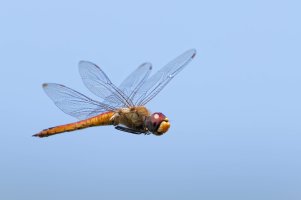
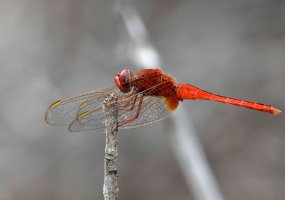
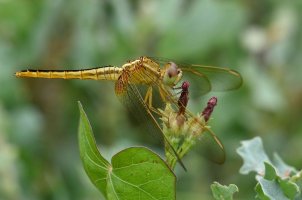
Upvote
0
Fully get your point about the colour of the pterostigma, ISv.Here you have more (older files): the first one is the same as the one posted above, after that are a male Scarlet and female Scarlet. Note the color of the wing spots as well as the black line on the back of the body: it is continuous on the Scarled and interrupted on the first species... On the link you sent the male Scarlet has dark wing spots but I think it's from the light/exposure. In reality they are yellow, not red.
This are taken with 200-500, as I already mention it's better lens for close-ups than my 500mm prime.
I thought, the black line might not be interrupted, depending on the angle of view.
But if you say it is, I'll believe you.
And it seems that the legs in the original pic are not red enough for a scarlet.
I have to think this over.
But I don't get your first pic DSC_0247_DxO_DxO.jpg in correlation with the original pic DSC_4985_DxO-1.jpg.
That because of the colour of the frons. In the original picture the fons is red, in the one you posted now it is beige.
Same with the thorax, the underparts of the abdomen, the wing veins and (if I see it right) the legs in the original picture. All red or with a red tone.
These are either different species, or your DSC_0247 is a female, and you didn't mention it. DSC_0247 also has spots at the wing tips.
But both seem to have reddish pterostigmata.
I see your dilemma... still not giving up.
Upvote
0
Well, since you like to dig in this: few more!
BTW I'm missing good literature about the dragons here (what one can easily find are popular articles and nothing really serious. With the Damselflies it's better, at least concerning the endemic species...).
Enjoy!
When I look at the pictures instantly several dragonflies come to my mind. But those are more common in Europe and Asia.
Maybe they found the same way as the scarlet skimmer did. So without focussing on Hawaii here some guesses, just shots in the dark:
The red one that I can see with those huge dorsal spots at the hind wing could be a red saddlebags (tramea onusta).
Found the pages Arizona Dragonflies just now. Seems to be a cool source with good descriptions and identification tips.
The pink/lilac one could be a roseate skimmer (orthemis ferruginea).
And putting the circle wider, both, your original red dragon pic and the pink/lilac one, could be from the genus trithemis
(more common in Europe, Asia, Africa).
So for original red dragon pic I'd take trithemis kirbyi or trithemis pluvialis.
But more guesses would make me look like a fool.
The orange/brown one has no recognizable cerci, so it looks like a female. But no idea here.
What do you think of this? Not bad or just foolish
Upvote
0
For the "The pink/lilac one could be a roseate skimmer (orthemis ferruginea)." I got to the same conclusion so if it's foolish we both are in the same bagWhen I look at the pictures instantly several dragonflies come to my mind. But those are more common in Europe and Asia.
Maybe they found the same way as the scarlet skimmer did. So without focussing on Hawaii here some guesses, just shots in the dark:
The red one that I can see with those huge dorsal spots at the hind wing could be a red saddlebags (tramea onusta).
Found the pages Arizona Dragonflies just now. Seems to be a cool source with good descriptions and identification tips.
The pink/lilac one could be a roseate skimmer (orthemis ferruginea).
And putting the circle wider, both, your original red dragon pic and the pink/lilac one, could be from the genus trithemis
(more common in Europe, Asia, Africa).
So for original red dragon pic I'd take trithemis kirbyi or trithemis pluvialis.
But more guesses would make me look like a fool.
The orange/brown one has no recognizable cerci, so it looks like a female. But no idea here.
What do you think of this? Not bad or just foolish
Upvote
0
Similar threads
- Replies
- 23
- Views
- 12K
- Replies
- 6
- Views
- 15K
- Replies
- 48
- Views
- 12K

